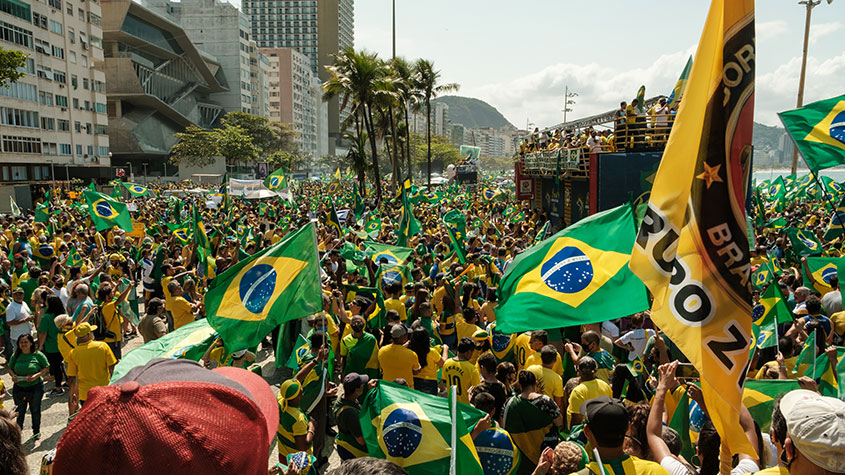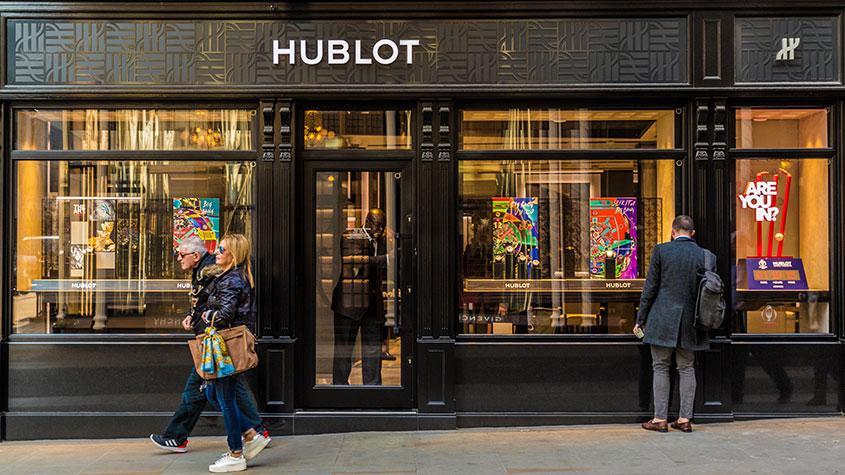The fast-growing sport investors have never heard of
Esports may sound like a niche hobby for computer geeks, but it’s actually a burgeoning global business that resembles the early stages of the Premier League. Stephen Connolly explains how you can profit from it.

When Amazon bought a video-game streaming business called Twitch in 2014, many investors were aghast. Founder and CEO Jeff Bezos had just splurged $970m on a company that lets people watch other people sit at home playing video games all day hardly a scintillating business model. They were even more rattled when Bezos insisted that "watching game play is a global phenomenon".
Yet four years on, Bezos has been vindicated. Twitch has established itself alongside other companies at the heart of "esports" the "fastest-growing sport most people haven't heard of", as Barney Waters, president of US athletic shoe group K-Swiss puts it. Goldman Sachs expects global esports revenues to triple to $3bn by 2022. This burgeoning industry is reminiscent of the English Premier League or American National Basketball Association before they went global. That implies ample scope for investors to profit from the phenomenon in the years ahead.
Watching a computer game in a stadium
So how exactly does it work? Esports spectators visit streaming websites or actual stadiums to watch professional gamers compete for several millions of dollars in prize money. Audiences usually range from active gamers to casual fans. Players are often recruited into professional teams and earn participation fees (in some cases six-figure sums) under contract. The competitions are structured as tournaments with rounds leading to finals. Teams may be associated with a country, region, or local area, just as in football and they boast equally besotted fans.
MoneyWeek
Subscribe to MoneyWeek today and get your first six magazine issues absolutely FREE

Sign up to Money Morning
Don't miss the latest investment and personal finances news, market analysis, plus money-saving tips with our free twice-daily newsletter
Don't miss the latest investment and personal finances news, market analysis, plus money-saving tips with our free twice-daily newsletter
As well as competing in tournaments (or not), some gamers play independently, streaming their activity and earning income from their subscriber base. They are therefore effectively individual professionals. Take 26-year-old streamer Tyler "Ninja" Blevins, who is earning $500,000 a month playing the recently launched game Fortnite (see box below) on Twitch, according to CNBC.
To many of us, all this fuss over computer games sounds absurd. It may help to compare esports to chess, another game of skill without athleticism that attracts many fans to live events. But investors needn't empathise with the spectators to appreciate and exploit the potential of esports. After all, presumably very few mining investors enjoy digging for minerals or shovelling iron ore. Just keep in mind the following industry characteristics: a big and growing global audience; high-profile backers with deep pockets; an appealing proposition for big-brand sponsors; and some of the most sought-after advertising and marketing demographics. That's on top of a double-digit growth outlook.
is a really big deal
Around two-thirds of viewers tend to be male and aged between their teens and 40. This is a prime marketing segment. These people are harder to reach by other means as their interest in professional sports is comparatively low and they don't watch as much television. Businesses, meanwhile, are also feeding off revenue streams that are largely the same as for any big sports events: advertising; tournament and team sponsorship; team ownership; media rights (the biggest growth area); ticket sales both online and for physical events; merchandising; and video-game publisher fees (the publishers own the intellectual property on which all events are built). Esports is also a marketing tool for the games themselves, building product sales and entrenching customer loyalty.
And there is a lot of potential customer loyalty available. The global audience of regular and occasional viewers is expected to reach 380 million this year, up from 134 million in 2012, and in three or four years' time to top 550 million that's a staggering 7.5% of the global population, and not far off the total English Premier League viewership on Sky and BT, which those firms pay almost £5bn to be allowed to broadcast. More specifically, the League of Legends World Championships final a leading game, not yet ten years old, from China's Tencent attracted 58 million viewers. That number of viewers in a fast-growing audience segment is enough to attract the world's high-spending big brands, broadcasters and streamers to esports. The Walt Disney Company's sports network ESPN is already off the mark, broadcasting live in July the final of Overwatch, another popular esport. To put this in perspective, just over 100 million people watched the latest US Superbowl.
How esports went mainstream
Esports is now reaching critical mass, but even when Jeff Bezos bought Twitch, it wasn't new. By the turn of the century internet accessibility and quality had improved enough to facilitate the first moves towards today's active and cohesive global gaming community. Around the same time there was a strong surge in the popularity of esports in South Korea, with the government forming the Korea e-Sports Association.
This followed early online game play in the 1990s, when companies such as Blockbuster and Nintendo were hosting tournaments across the US . The 1990 finals of the Nintendo World Championships, for example, were held at Universal Studios Hollywood. An even earlier forerunner was Atari's Space Invaders (the ground-breaking legend in video-games history) championship with thousands of players competing for a $50,000 first-place prize.
Today there is widespread acknowledgement that esports is here to stay, and top businesses in sectors such as broadcasting and advertising are staking claims. Knowledge has been spreading quickly through the trade press, investment-bank research and corporate activity, alongside an increase in "lifestyle" coverage of top pro-gamers mainly young men with multimillion-dollar earnings and colourful aliases, such as KuroKy, UNiVeRse, MinD_ContRoL and Fear.
The key catalysts have been the technical development and adoption of internet streaming, which have vastly extended global potential viewership. And in the past few years games publishers have brought structure and a degree of industry standardisation to a field hitherto seen as a disorderly free-for-all.
The key players
The leaders in this respect have been Tencent and Activision Blizzard, both of which have developed (from scratch) leagues around their titles League of Legends and Overwatch. They have provided a blueprint for others to follow, which will drive wider participation and outside investment into the industry. One of their crucial decisions was to end "relegation" in their leagues so that no team drops out even during a period of poor performance. Big investors can therefore commit to buying a team slot with more confidence.
It also stabilises the environment for selling media rights and attracting brand investment. These games are popular and so participation doesn't come cheap. Getting into these leagues costs $13m-$20m, but these are opening positions and some commentators see new Overwatch slots, for example, selling for $60m in a few seasons' time.
In addition, the arrival of high-profile investors has boosted interest from various quarters. Meg Whitman, former CEO of eBay and Hewlett Packard, took a stake in the Immortals esports organisation, valued at $100m, and joined its board. Other investors include actor Ashton Kutcher, and major basketball players Magic Johnson and Shaquille O'Neal. In addition, traditional sports teams have been dabbling in esports too, hopefully spurring interest from their own supporters and sponsors. In late 2016 the Philadelphia 76ers basketballers became the first North American professional sports team to own an esports team.
Most outsiders invest in the esports organisations. These field teams and work hard to attract, build and maintain fan bases across social media, which bolsters the wider industry too. They include older hands such as Cloud9 and Team Liquid, together with newer entrants such as Echo Fox, Immortals (the Meg Whitman company) and Team SoloMid. Cloud9, for example, fields the UK team London Spitfire, which in July won the inaugural final of Activision Blizzard's Overwatch League at the Barclays Center in New York, taking the $1m prize.
As a team entity, Cloud9 has now won around $7m in prize money and, according to some, is valued at $105m-$140m. Prize money is also a major contributor to the rising profile of esports. In 2017 it broke $100m for the first time. Goldman Sachs sees the total prize pool climbing rapidly to $413m by 2022.
Sponsors are piling in
The dynamics of the industry can change quickly. Fortnite, a relatively new game with an attractive esports format, has been a phenomenon in 2018, with owner Epic Games promising to pay $100m in prize money during the first year of competitions. That makes Fortnite the world's biggest esport for now.
Twitch, meanwhile, has come to dominate esports streaming. Its closest rival is YouTube Gaming, with Facebook also active in the market. In the first quarter of 2018 Twitch streamed ten times more esports than YouTube Gaming. In one week in June, Twitch viewers spent 17.7 million hours watching players of Leagueof Legends just one esport game according to Esports Observer.
Media rights is the big growth area over coming years. To give a sense of scale, BAMTech, a Disney-owned streaming partner of MLB, NHL and others, entered into a contract for exclusive rights for all League of Legends esports for $300m over six years. Sponsors are also at the table: Intel has been sponsoring esports since 2006 and Coca-Cola sponsors League of Legends. Others include Comcast, Red Bull, Mountain Dew, T-Mobile, Mobil, Audi and Airbus.
It's worth adding that this month esports is featured as a demonstration event at the Asian Games in Jakarta. The International Olympic Committee has hosted an esports forum and could perhaps eventually decide to include it in the Olympic Games (see below). As the NewZoo research consultancy has pointed out, almost the only thing missing so far is the first Nike-sponsored esports athlete or team, but given the outlook that can only be a matter of time. And when the first Nike video-gaming trainers do launch, we will know without any doubt that esports has come of age.
A compelling opportunity
The bottom line, then, is that esports is a compelling opportunity. There are hundreds of millions ofviewers with prime demographics set to generate billions in global revenues in an industry many mainstream investors have yet to understand fully. Such entry points to long-term growth are few and far between. We look at some of the most promising plays in the box below.
The most promising plays

The big video-game publishers are key esports beneficiaries. They are well placed to capitalise on what, alongside the players, makes esports what it is: the games themselves. My top stock is Activision Blizzard (Nasdaq: ATVI), a big esports enthusiast creating its own leagues. It's worth $42bn and has a multi-billion dollar slate of top game franchises such as Overwatch and Call of Duty and, beyond esports, is a quality play on the video-games industry as a whole. It is positively viewed by analysts with an $82 price target, implying 15% upside.
Electronic Arts (Nasdaq: EA), another big player, is approaching esports slightly differently. Rather than building leagues, it sees esports as a marketing strategy to drive core product sales which seems to be working. A shift to league-building, however, wouldn't be a surprise. A third video-games play is Take Two Interactive (Nasdaq: TTWO). It is smaller than its two peers, with a narrower but high-quality games range, including Grand Theft Auto. It has the fastest earnings-growth rate and in October will launch the eagerly anticipated game Red Dead Redemption 2, a likely catalyst for further earnings and share-price gains.
These three are all distinct and stand-alone businesses, but it might be worth considering splitting an investment across all three within a portfolio to give you diverse video-game and esport exposure.
As discussed, Amazon (Nasdaq: AMZN) owns Twitch central to esports infrastructure. Its sales come from subscriptions, donations and advertising, with membership packages built around Twitch Prime. Amazon's valuation is punchy, but so is the earnings outlook. Betting against it has rarely proved profitable and while possible regulation/tax changes could unsettle the wider business, there's still a long-term case for buying.
As competition grows games have got to get better, which comes down largely to graphics and the speed at which they can be rendered. Graphics chip leader NVIDIA (Nasdaq: NVDA) is gaining from increasing hardware sales and demand for enhanced capability and functionality. The shares have been good performers and the company is highly rated despite strong competition. It's an attractive business, but watching and then buying on a general market pullback would make most sense.
Moving across the Atlantic, game seller GAME Digital (LSE: GMD) faces headwinds selling on the high street is a big struggle while buying video games is increasingly done online. So it's trying to reinvent itself, which is a risk. It wants to make its stores more of a place to "hang out", introducing esports facilities with support from Sports Direct's Mike Ashley. It's one to watch to gauge how esports evolve in Britain.
Gfinity (Aim: GFIN) hosts and organises esports events. It's ambitious but small and burns cash fast. The board has recently been repopulated. Until the flow of deals picks up, or sustainable profits emerge, watch to see how the new team gets on.
Five of the most popular esports
Overwatch (Blizzard Entertainment, first released 2016): two squads of six players battle for control of a map or to complete specific missions. Each character has a unique set of skills and vulnerabilities. Currently one of the world's biggest esports, though facing stiff competition from Fortnite (see below).
Similarly popular team-based "first-person shooters" include League of Legends (Riot Games, 2009) and Defence of the Ancients 2 (Valve, 2013).
Fortnite Battle Royale (Epic Games, 2017): 100 players are left on an island and fight to the death, Hunger Games-style, until there's only one left. It's so popular that it's already been the subject of various moral panics bythe tabloids.
StarCraft II (Blizzard, 2010): the game that took esports mainstream (complete with a match-fixing scandal in South Korea), StarCraft is a science-fiction strategy game where players compete head-to-head as one of three races (human, alien, or robot, basically) to collect resources, build armies, then send them into battle against each other. A little more like fast-paced chess than the other games mentioned here, but still largely based on blowing things up. Indeed, International Olympic Committee president Thomas Bach has declared that the prevalence of violence in esports games makes them "contradictory to the Olympic values", so it might take a while before you see them in the medal table.
Get the latest financial news, insights and expert analysis from our award-winning MoneyWeek team, to help you understand what really matters when it comes to your finances.
Stephen Connolly is the managing director of consultancy Plain Money. He has worked in investment banking and asset management for over 30 years and writes on business and finance topics.
-
 Five ‘bear traps’ to look out for this bonus season – and four ways to lessen the blow
Five ‘bear traps’ to look out for this bonus season – and four ways to lessen the blowMarch is the peak month for bonuses, but it can lead to tax and pension issues. We look at four ways to protect your hard-earned money.
-
 Saba pursues more closed-ended funds
Saba pursues more closed-ended fundsActivist investor Saba Capital Management could move against more UK closed-ended funds. Some trusts are taking pre-emptive action.
-
 Invest in space: the final frontier for investors
Invest in space: the final frontier for investorsCover Story Matthew Partridge takes a look at how to invest in space, and explores the top stocks to buy to build exposure to this rapidly expanding sector.
-
 Invest in Brazil as the country gets set for growth
Invest in Brazil as the country gets set for growthCover Story It’s time to invest in Brazil as the economic powerhouse looks set to profit from the two key trends of the next 20 years: the global energy transition and population growth, says James McKeigue.
-
 5 of the world’s best stocks
5 of the world’s best stocksCover Story Here are five of the world’s best stocks according to Rupert Hargreaves. He believes all of these businesses have unique advantages that will help them grow.
-
 The best British tech stocks from a thriving sector
The best British tech stocks from a thriving sectorCover Story Move over, Silicon Valley. Over the past two decades the UK has become one of the main global hubs for tech start-ups. Matthew Partridge explains why, and highlights the most promising investments.
-
 Could gold be the basis for a new global currency?
Could gold be the basis for a new global currency?Cover Story Gold has always been the most reliable form of money. Now collaboration between China and Russia could lead to a new gold-backed means of exchange – giving prices a big boost, says Dominic Frisby
-
 How to invest in videogames – a Great British success story
How to invest in videogames – a Great British success storyCover Story The pandemic gave the videogame sector a big boost, and that strong growth will endure. Bruce Packard provides an overview of the global outlook and assesses the four key UK-listed gaming firms.
-
 How to invest in smart factories as the “fourth industrial revolution” arrives
How to invest in smart factories as the “fourth industrial revolution” arrivesCover Story Exciting new technologies and trends are coming together to change the face of manufacturing. Matthew Partridge looks at the companies that will drive the fourth industrial revolution.
-
 Why now is a good time to buy diamond miners
Why now is a good time to buy diamond minersCover Story Demand for the gems is set to outstrip supply, making it a good time to buy miners, says David J. Stevenson.